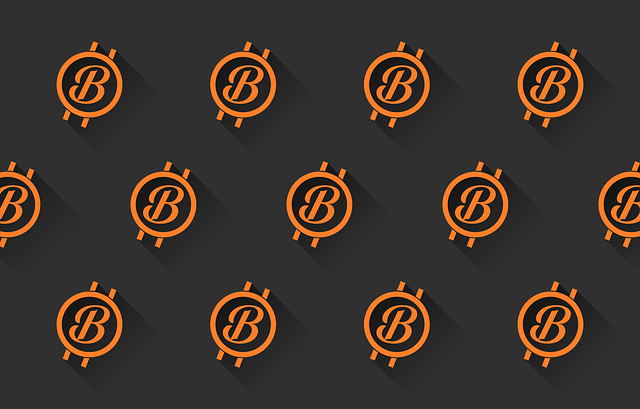TL;DR:
In inflationary periods, understanding default risk is crucial for investors. To mitigate this risk, investors should adopt strategic approaches like diversifying across asset classes (e.g., real estate, precious metals), focusing on high-quality credits with strong fundamentals, and monitoring economic indicators. Key strategies include shifting to high-return investments, diversifying sectors less affected by inflation, exploring alternatives like real estate, balancing growth with volatility, and regularly rebalancing portfolios. Studying historical default cases, such as those in 1980s developing nations, provides valuable insights for informed investment decisions during economic uncertainty and inflation.
In the volatile landscape of investment during inflationary periods, understanding default becomes paramount. This comprehensive guide delves into the intricacies of default in an investment context, exploring its impact on portfolios and strategic navigation. We dissect the effects of inflation on investment choices, offering insights into effective strategies to mitigate risks. Through historical case studies, learn from past experiences and gain valuable lessons for navigating today’s economic climate.
- Understanding Default in Investment Context
- Impact of Inflation on Investment Choices
- Strategies for Navigating Default during Inflation
- Case Studies: Learning from Historical Examples
Understanding Default in Investment Context

In the context of investments, understanding “default” is crucial, especially during inflationary periods. Default refers to the failure of a borrower to repay their debt as agreed upon in the loan terms. This can occur when an individual or entity cannot meet financial obligations, often due to economic downturns, rising interest rates, or unexpected events like job loss. During inflationary times, default becomes an even more significant concern because it can erode the value of future cash flows and principal repayments. Investors must be aware that as inflation rises, the real value of their investments decreases over time, making it harder for borrowers to repay debts.
Investing during inflationary periods requires a strategic approach. Diversification is key; spreading investments across various asset classes can help mitigate the risk of default. Additionally, investors should focus on high-quality credits with strong financial fundamentals and sufficient collateral. Keeping an eye on economic indicators and central bank policies is essential as these factors influence interest rates and borrower affordability, both of which play a critical role in investment decisions during inflationary periods.
Impact of Inflation on Investment Choices

During inflationary periods, investors often face a complex landscape where their investment choices play a pivotal role in mitigating risk and preserving wealth. With rising prices, purchasing power decreases, which can significantly impact investment strategies. This prompts investors to reevaluate their portfolios and make adjustments to navigate the challenges posed by inflation. One common approach is to shift towards investments that offer higher returns relative to the rate of inflation, such as equities or certain types of bonds. These asset classes have historically proven to outperform fixed-income securities when inflationary pressures are high, providing investors with a buffer against eroding purchasing power.
The dynamic between inflation and investment decisions creates a delicate balance. For instance, while stocks may offer attractive growth potential, their volatility can be a concern during rapid inflation. As such, investors often seek diversification to manage risk. Investment strategies during these periods might include focusing on sectors less affected by inflation, like utilities or consumer staples, or exploring alternative investments like real estate, which has traditionally been considered a hedge against inflation. By carefully considering the impact of inflation and adapting investment choices accordingly, individuals can better protect their financial interests in uncertain economic times.
Strategies for Navigating Default during Inflation

During times of inflation, default becomes a significant concern for investors. To navigate this risk effectively, it’s crucial to diversify your investment portfolio across different asset classes, including hard assets like real estate and precious metals, which historically retain their value during economic downturns. Additionally, focusing on high-quality, well-established companies with strong balance sheets can mitigate the impact of default.
Investment strategies should also emphasize cash flow generation and income-producing assets. Bonds, especially those with higher credit ratings, offer a more stable source of return compared to equities. Furthermore, investors should consider tactical allocations to alternative investments like private equity or hedge funds, which may provide protection against inflationary pressures. Regularly reviewing and rebalancing your portfolio based on market conditions is essential to maintain a balanced risk profile.
Case Studies: Learning from Historical Examples

In times of economic uncertainty, particularly during inflationary periods, understanding historical default cases becomes invaluable for investors. By examining past instances where entities have defaulted on their obligations, we can glean crucial insights into risk management strategies and potential outcomes. For instance, the experience of several developing nations in the 1980s offers a case study on the impact of high inflation on sovereign debt. These countries, burdened with substantial foreign debt, struggled to service their loans as inflation eroded purchasing power, ultimately leading to default. This historical narrative underscores the importance of prudent investment decisions during inflationary times, emphasizing the need for hedging strategies and careful selection of assets.
Moreover, looking back at these historical examples can help investors navigate current market conditions more effectively. By studying the factors that contributed to defaults in the past, such as excessive borrowing, weak governance, or sudden changes in economic policies, investors can anticipate potential risks and make more informed choices. For example, understanding the link between inflation and default rates can guide investment strategies during periods of rising prices, encouraging diversification and a focus on assets with historical resilience in such environments.
In the face of rising inflation, understanding default in investment contexts becomes paramount for making informed decisions. By examining historical case studies and adopting strategic approaches, investors can effectively navigate challenging economic landscapes. Implementing these strategies allows for a proactive stance on investment during inflationary periods, ensuring financial resilience and potentially enhancing long-term growth prospects.
